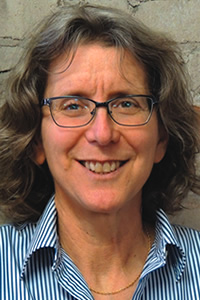
Nora Goldstein
BioCycle December 2016
As 2016 comes to a close, let’s step back and assess the “State of the BioCycle Community.” It’s useful to filter our assessment through the lens of BioCycle founder Jerome (Jerry) Goldstein, who wrote the following in “A Statement of Purpose” in the Spring 1960 Premier Issue:
“We are publishers and editors thoroughly convinced that there is a need to conserve this country’s as well as the world’s natural resources. We believe that converting municipal and industrial organic wastes into useful products would be an effective step forward in a long-range conservation program….”
So how did we do in 2016 in terms of conserving this country’s (as well as the world’s) natural resources? We’d like to start with yesterday, Dec. 5, 2016, which was World Soil Day. I had the honor of attending “Soils: The Foundation of Life,” a one-day workshop hosted by the U.S. National Committee for Soil Sciences to celebrate soils. The workshop took place at the National Academies of Sciences, Engineering, and Medicine Keck Center in Washington, D.C. The day began with Jo Handelsman, Associate Director for Science at the White House Office of Science and Technology Policy (OSTP), announcing the Obama Administration’s new steps to work towards “the long-term health and sustainable use of one of America’s most important natural resources: its soil.”
Handelsman also announced OSTP’s release of a Federal framework for soil science, developed in collaboration with more than a dozen Federal agencies, and with input from about 80 stakeholders. The “Framework for a Federal Strategic Plan for Soil Science” was published in the Federal Register yesterday (12/5/16) and is available for public comment until January 10, 2017. The Framework identifies three overarching “Challenge and Opportunity” categories: 1) Land use and land cover change; 2) Unsustainable land management practices; and 3) Climate and environmental change. You can view these documents in the online version of this Editorial.
Now back to our assessment. Yesterday’s workshop and the OSTP announcements most certainly push forward our underlying goal to advance conservation of U.S. and the world’s natural resources. So does the critical attention nationally and abroad to the horrific waste of natural resources imbedded in food that is grown but never eaten. Directly related are the exciting actions to address this problem — the rapidly growing infrastructure and innovation to rescue and redistribute wasted food to people who are hungry and food insecure, as well as the work toward extracting value from inedible food. These actions improve our human resources.
Key articles that paint the picture of the State of the BioCycle Community in 2016 are available on this complementary digest page. We would like to leave you with our bottom line:
Jerry Goldstein had a vision in 1960 that recycling organics and utilizing the end products to build healthy soils and protect water quality was the ultimate end game. He dedicated his career to turning that vision into reality — and to making BioCycle the voice and the champion of advancing the state of knowledge and practice.
There is a lot of noise in the political arena these days that on one level, appears to threaten our advancements. Jerry, an eternal optimist, didn’t have much patience for fretting. At a time like this, we ask: “What would Jerry say?” And to our BioCycle Community, his answer would be “Full steam ahead.” Momentum is in our favor.









